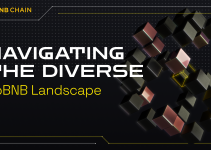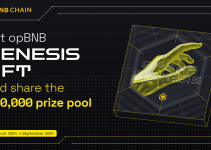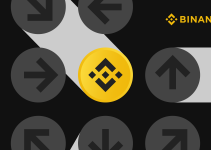
In the Project Spotlight series, we interview projects developing on the Binance Smart Chain (BSC). Previously, we shared interviews with ForTube, BurgerSwap, Bounce, Arkane Network, AnySwap, Bitquery, Blink, Tenderly, Defistation, PARSIQ, and Injective Protocol. The next project you’ll learn about is Mirror Protocol.
Please describe your project to those who might not be familiar with Mirror Protocol.
Mirror: Mirror Protocol is a synthetic asset platform that grants price exposure to popular US stocks and ETFs through Mirrored Assets (mAssets), which reflects the price of traditional assets on-chain. We anticipate that the community will expand the offering to other assets, such as equities, commodities, crypto assets, and ETFs through governance.
Our mission is to give users around the world who otherwise wouldn’t have access to certain markets the opportunity to participate – without the burdens of actually holding the assets – in a way that’s highly intuitive. Mirror is on Terra, Ethereum, and now on Binance Smart Chain, with plans to be available on every major chain!
When was the idea behind Mirror born, and what led to it?
Mirror: The idea for Mirror was born when we saw the demand for synthetic assets primarily coming from individuals who were disenfranchised from some of the world’s largest financial markets. Given that there was, and remains, a strong trend for decentralization within the crypto space, we wanted to develop a system where any user could utilize his/her cryptocurrency assets to gain exposure to assets typically difficult for them to access at home.
We also wanted to take advantage of some of the newest technologies, such as AMMs, and incorporate them into the trading mechanism while retaining some of the legacy infrastructure characteristics of traditional markets. Synthetic assets may seem complex at first to many non-crypto users, but we think Mirror can help break down many of those barriers (e.g., prohibitive costs) as we move into 2021 and crypto awareness progresses.
Tell us something about your team’s background.
Mirror: Most of our team is based in Seoul, South Korea where the Terra headquarters are located, with several other team members located around the world including the US, Greece, and India. Like crypto, Terra never sleeps, and our community is worldwide as well.
Mirror is a completely community-governed protocol, with users hailing from across SE Asia (e.g., S Korea, Thailand, Taiwan, Malaysia) and Western countries like the US. As Mirror grows, we welcome a more global community as we seek to grant access to synthetic assets to everyone eager to dive into DeFi and what Mirror has to offer.
What are the main advantages of Mirror for the user, compared to a similar project from a mainstream financial market?
Mirror: Mirror is a synthetic asset protocol, meaning that rather than owning an asset like a stock outright. When a user purchases an mAsset, they’re buying a synthetic representation of that asset that only reflects the price. Because of its decentralized and composable design, Mirror enables community governance to list all kinds of assets (e.g., stocks, ETFs, commodities, crypto, etc) side-by-side. The result is a censorship-resistant asset platform with access to global markets that are often not available to many users around the world. Developers can build applications and new features on top of Mirror and receive funding allocated by the Mirror community via voting with the MIR governance token.
Applied to the Robinhood situation today, Mirror will never censor assets on the platform. The community is currently voting on listing GME and AMC in spite of major brokerages around the US censoring GME and AMC.
With Mirror Wallet, users have access to a sleek Robinhood-like interface for tapping into synthetic assets directly from their phone. However, compared to Robinhood, Mirror enables anyone in the world to access its synthetic assets. Composability enables Mirror to connect to other blockchains and applications also, such as listing mAssets on BSC platforms like StableXSwap and Pancake AMM, or even offering leveraged futures trading of mAssets on protocols like Injective.
Mirror is like a community-directed living organism that adapts to what the community demands — offering features not possible in traditional finance.
Let’s say I want to start using Mirror. Where do I start? Where can I find some how-to guides?
Mirror: A list of resources for Mirror is below. To get started, Mirror’s formal documentation is the best route.
- Documentation
- Terra Mirror Web App
- Mirror Community Forum
- Delphi Digital Mirror Overview
- Paul Veradittakit (Pantera Capital) Mirror Overview
- Blockonomi Mirror Overview
Why did you decide to migrate/build on Binance Smart Chain?
Mirror: Binance Smart Chain has a very active community and some promising DeFi projects on the rise. Configuring our bridge to BSC was an obvious next step for Mirror, and we are actively engaging with various DeFi teams on BSC to bring UST and mAssets to their communities.
We’re already thrilled with the influx of new BSC users to the Mirror community and welcome their participation in governance and growing the Mirror ecosystem.
What do you hope to see next from the BSC community?
Mirror: Active engagement in the Mirror community. The Mirror community is already highly active, and with more BSC users, we hope they can bring some fresh perspectives, innovative ideas, and resources to help make Mirror the premier synthetic asset protocol in DeFi.
Some of the projects we’ve been working with already, such as StableXSwap and Pancake AMM, have been really helpful in introducing us to the BSC community. We look forward to working with them further along with other projects and community members of BSC.
What do you see as the main challenge for the future of DeFi?
Mirror: Adoption. DeFi is hard to use right now, even for crypto-savvy participants because the underlying “money legos” are complicated and challenging to understand. Especially with gas fees on Ethereum being so high, the user experience and educational content around interacting with DeFi projects are subpar.
Making DeFi more accessible means abstracting away the underlying complexity. Most crypto participants understand the long-term potential of DeFi and are excited about its future impact on the financial world, but conveying that message to the mainstream and empowering them to use DeFi is an uphill battle.
Where do you see DeFi and BSC in five years?
Mirror: We hope to see the BSC community immersed in a thriving ecosystem of easy to use DeFi apps with cross-chain assets fluidly moving between blockchains like BSC, Terra, Ethereum, Solana, and more. Crypto moves at lightning speed, so it’s hard to project where the industry will be in 5 years, but with the current pace of innovation, we expect DeFi to break into the mainstream by then.
That means solving DeFi’s UX problems right now, developing cross-chain collaboration between fragmented DeFi communities, and working towards a common goal. Eventually, users may not even have to know which chain they’re operating on. Instead, the money legos underscoring DeFi will operate without the end-user having to understand what’s happening at all.
They can simply click a few buttons, earn attractive yields, trade synthetic assets, borrow/lend various assets, purchase indexes, interact with decentralized insurance pools, and more. DeFi empowers people to participate in the new financial system that caters to a global audience.
If you’re interested in knowing more about the Binance incentives for BSC projects, please visit https://binancex.dev/index.html.
Alternatively, you can directly apply for the funding via this simple and straightforward form.


